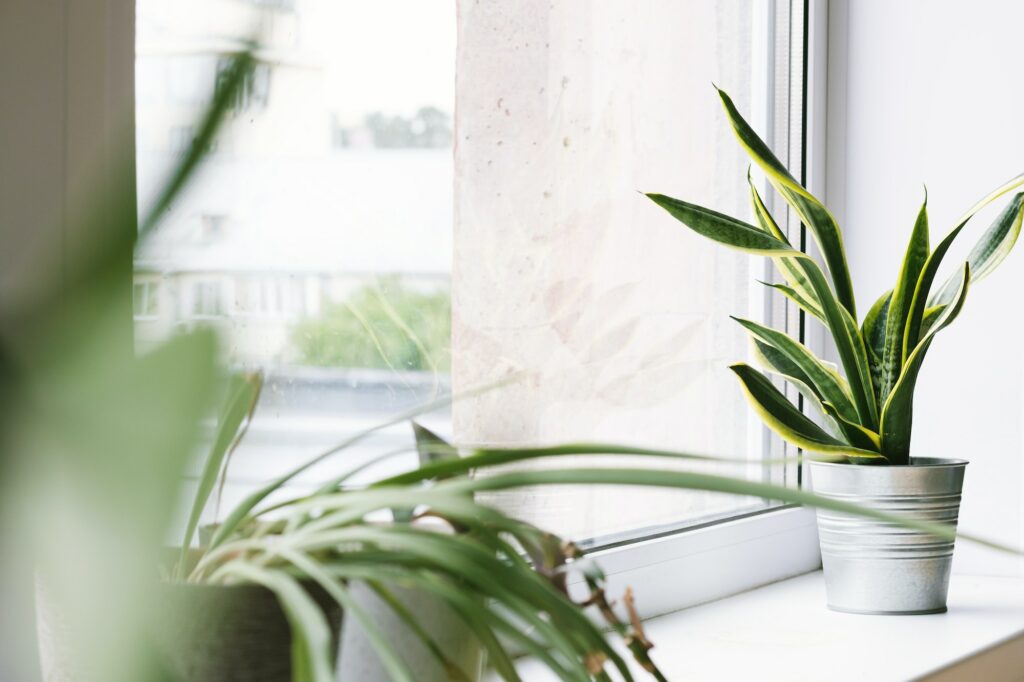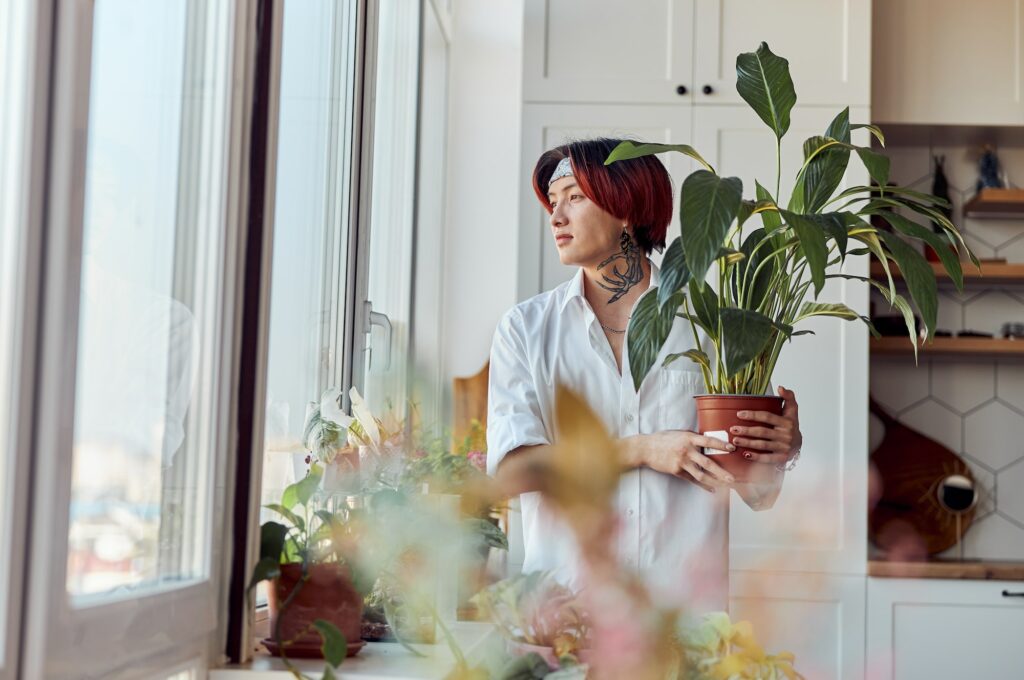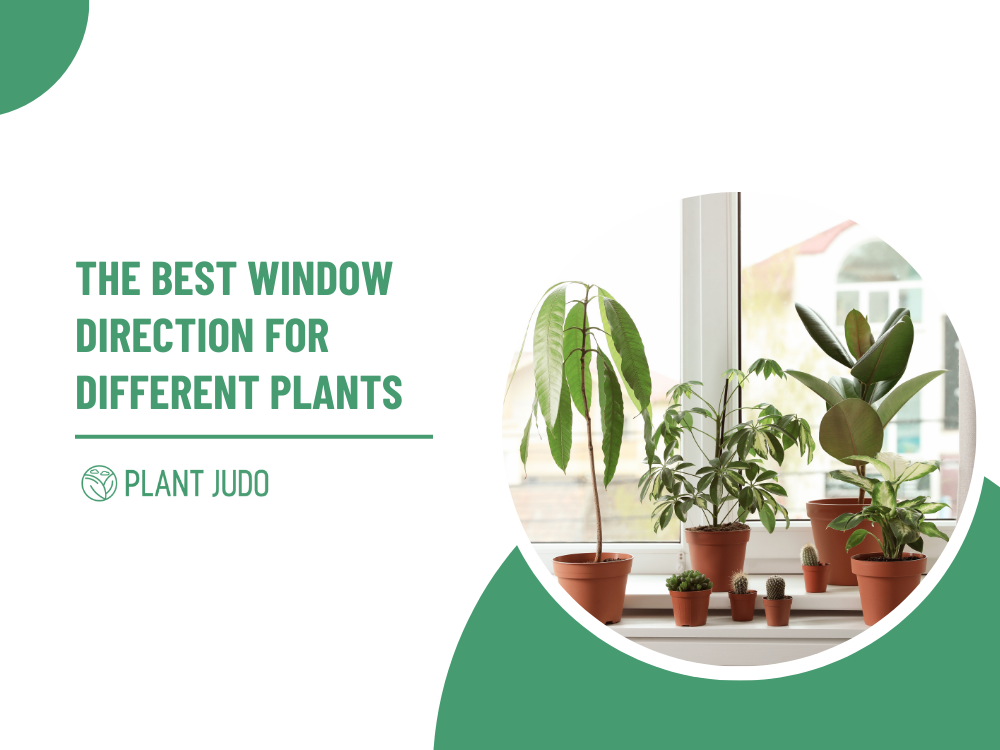
The window can be a great way to grow plants in your home without going outside. However, when choosing which plants to grow, you must account for the position of the sun in the sky.
Here are the best plants for each window direction to get the most sunlight for your plants.
North-Facing Windows
A window facing north can help plants grow well! Those windows provide the most constant lighting throughout the day. Here, plants that enjoy filtered or indirect light will thrive. Throughout the winter, artificial lighting can increase the amount of light. Here are some of the plants that can thrive in north-facing windows.
Cast Iron Plant (Aspidistra Elatior)
Cast iron plant (Aspidistra elatior) is the best for north-facing windows. It can grow up to 12 feet tall and has large leaves that can provide shade from the sun. The plant is also easy to care for, as it does not require a lot of water and does not need to be in direct sunlight to grow. Cast iron plants are native to India and Southeast Asia and are used as decorative plants or for their medicinal properties.
Snake Plant (Sansevieria Trifasciata)
Snake Plant (Sansevieria trifasciata) is the best plant for north-facing windows. This is because it enjoys bright sunlight and does not require a lot of water. It can live in soil or a pot and grow about 2 feet tall. Unlike other plants, the snake plant does not need to be watered daily; only when the soil starts to feel dry.
Spider plant (Chlorophytum Comosum)
Many plants can be used in north-facing windows, but none are as versatile and welcoming as a spider plant. Spider plants grow quickly in moist, well-drained soil, making them the perfect choice for windows with plenty of sunlight. They also tolerate low light levels well and can even handle partial shade. Their small leaves and spiky flowers make them popular for indoor and outdoor gardens.
East-Facing Windows

The greatest location for indoor plants is near an east window because it receives good light throughout the day and full sunlight in the morning. Also, the tremendous heat that typically develops in the summer in the south and west windows won’t have to be endured by your indoor plants. Here are some of the plants that can thrive in east-facing windows.
Boston Fern (Nephrolepis Exaltata)
Boston Fern is the best plant for east-facing windows because it loves sunny spots and gets plenty of indirect sunlight. This plant is also relatively easy to care for, requiring only moderate watering when the soil is dry and once-a-week fertilisation. Boston ferns create a natural green curtain or mat on your window sill, adding an interesting texture and colour to your home.
Fiddle Leaf Fig (Ficus Lyrata)
Fiddle Leaf Fig is a great plant for east-facing windows. It is hardy in zones 9-11, grows up to 16 feet tall, and has attractive leaves and light green on the bottom. When ripe, the figs are dark red, making them a beautiful addition to any garden.
Jade Plant (Crassula Ovata)
The Jade plant is an excellent choice for east-facing windows because of its long vines and drooping foliage. The long vines can cover the window, while the drooping leaves provide natural shade. The Jade plant is also very easy to care for, requiring little water or fertiliser.
South-Facing Windows

A south-facing window is ideal for plants that require a broad range of light throughout the day because it provides both bright indirect light and full sun in the afternoon. The south-facing windows will be your go-to window for bright-light plants that enjoy soaking up the sun. Here are some of the plants that can thrive in south-facing windows.
Money Plant (Pilea peperomioides)
The Money Plant (Pilea peperomioides) is the best plant for a south-facing window. It gets plenty of sunlight and stays relatively cool in the summer. Additionally, it is a low-maintenance plant that doesn’t require regular watering. Money Plant also has a very different look, making it perfect for any room in the house.
Bird Of Paradise (Strelitzia Nicolai)
The Bird of Paradise, known as Strelitzia Nicolai, is a plant perfect for south-facing windows. It has long, slender leaves and yellow flowers. The flowers are a bright, cheerful colour, creating a beautiful display in the window. The Bird of Paradise is easy to care for and will live for many years if you take good care of it.
Ponytail Palm (Beaucarnea recurvata)
Only a few plants can compare to the ponytail palm. This hardy and attractive palm is perfect for areas with direct sunlight and little humidity.
The Ponytail Palm is a fast-growing, easy-to-care-for palm that requires little watering or fertilisation. It also tolerates low light levels well, making it a great choice for window gardens.
West-Facing Windows
A west-facing window is ideal for plants that prefer receiving a lot of afternoon sun. It can be especially beneficial for plants that require partial sunlight, which a west-facing window provides in the morning, though with more direct light at other times of the day and without the complete exposure of a south-facing window. Here are some of the plants that can thrive in south-facing windows.
Ti Plant (Cordyline fruticosa)
Ti Plant (Cordyline fruticosa) is the best for west-facing window sills because it is a hardy evergreen that can tolerate dry conditions. Additionally, ti plants are attractive additions to any window space and provide natural light and privacy.
Mint Plants (Mentha)
Mint plants are perfect for west-facing windows because they enjoy plenty of sunlight and don’t require a lot of water. They grow quickly, reaching up to 12 inches in height, and produce large leaves that are highly fragrant. They can also be easily propagated by cutting their stem before they flower.
Air Plants (Tillandsia)
Tillandsia is perfect for western windows because they require little maintenance and can be grown even in dry climates. When it comes to air purification, Tillandsia is especially efficient at removing pollutants from the air.
They make a great addition to any room and are one of the most versatile plants to have in your garden or home décor. If you’re looking for a plant that can add brightness and contrast to your home’s interior, Tillandsia may be what you’re looking for!
Conclusion
Different window directions offer different views for your plants. To maximise the benefits of your plants, find the window direction that best suits their needs.
Some plants are better suited to facing east or west, while others thrive when facing north or south. When selecting a window, consider the size and shape of your window and the type of plant you want to grow.
Was this article helpful? Let us know in the comments.
FAQs
Does the sunlight direction matter for your houseplant?
Yes. Plant growth will be substantially reduced without the full sun of a south-facing window, even though east- and west-facing windows are your next best options. We advise adding a grow light to a window facing east or west to augment the natural light.
Which direction is not good for plants?
According to Vastu Shastra, green plants shouldn’t be placed in the southwest corner of the house. First of all, the plants in this direction don’t receive enough sunlight, and secondly, this location is thought to be unlucky for plants from an architectural standpoint.
What facing windows get the most light for plants?
Windows that face south are the hottest and receive the most light. Windows that face north are the darkest, weakest, and coldest. Windows that face east receive feeble, chilly morning light. The afternoon sun shines brightly and hotly through windows towards the west.


